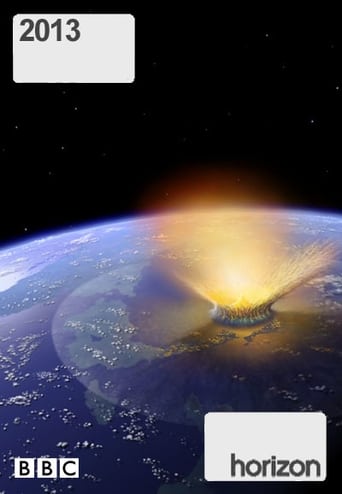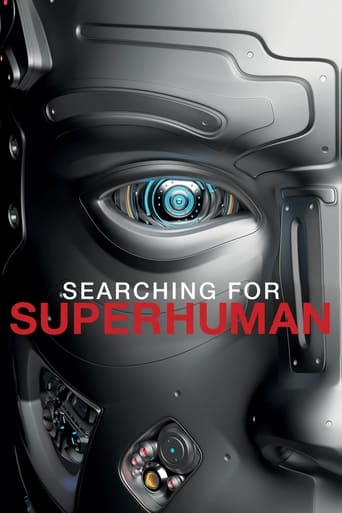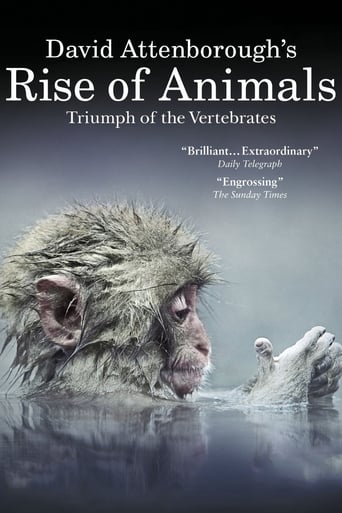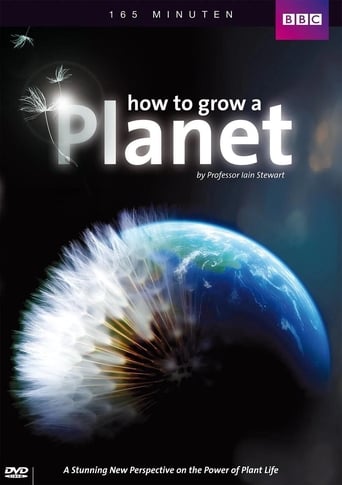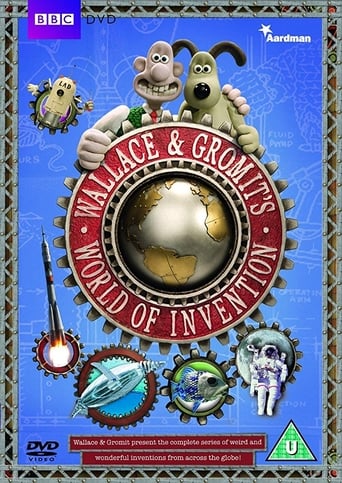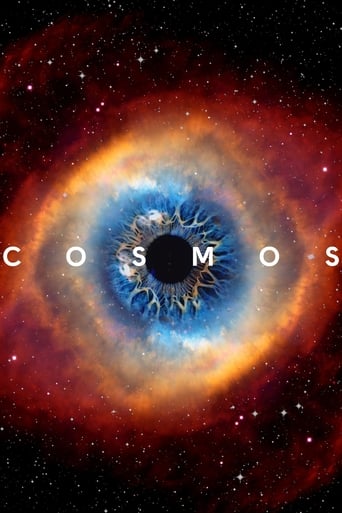Horizon Season 39
With 30 Day Free Trial!
Horizon
1964 / TV-PG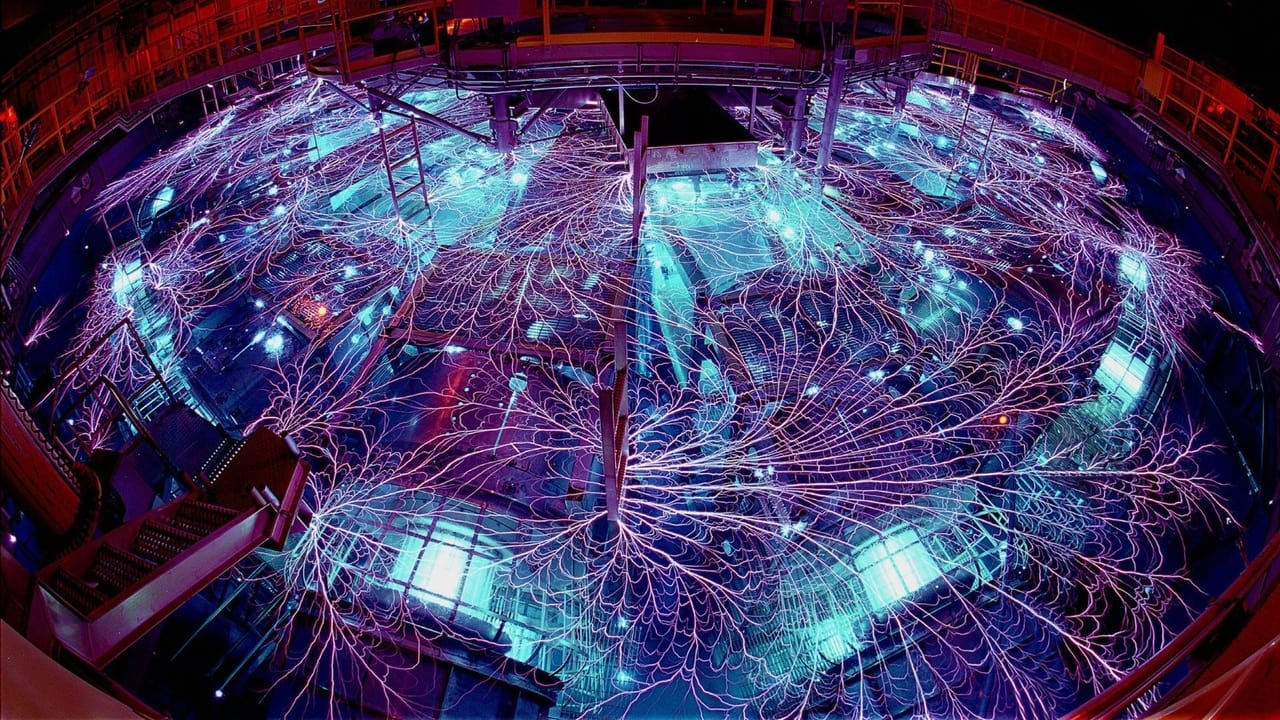
Horizon tells amazing science stories, unravels mysteries and reveals worlds you've never seen before.
Watch Trailer
With 30 Day Free Trial!
Horizon Season 39 Full Episode Guide
In 1542, the Spanish Conquistador, Francisco de Orellana ventured along the Rio Negro, one of the Amazon Basin's great rivers. Hunting a hidden city of gold, his expedition found a network of farms, villages and even huge walled cities. At least that is what he told an eager audience on his return to Spain. The prospect of gold drew others to explore the region, but none could find the people of whom the first Conquistadors had spoken. The missionaries who followed a century later reported finding just isolated tribes of hunter-gatherers. Orellana's story seemed to be no more than a fanciful myth. When scientists came to weigh up the credibility of Orellana's words, they reached the same conclusion. As productive as the rainforest may appear, the soil it stands in is unsuited to farming. It is established belief that all early civilisations have agriculture at their hearts. Any major population centre will have connections with a system of intensive agriculture. If a soil cannot support crops sufficient to feed a large number of people, then that serves as an effective cap on the population in that area. Even modern chemicals and techniques have failed to generate significant food from Amazonian soil in a sustainable way . The thought that indigenous people could have survived in any number - let alone prospered - was dismissed by most scientists. Scientific consensus was sure that the original Amazonians lived in small semi-nomadic bands and that Orellana must have lied.
250 million years ago, long before dinosaurs roamed the Earth, the land and oceans teemed with life. This was the Permian, a golden era of biodiversity that was about to come to a crashing end. Within just a few thousand years, 95% of the lifeforms on the planet would be wiped out, in the biggest mass extinction Earth has ever known. What natural disaster could kill on such a massive scale? It is only in recent years that evidence has begun to emerge from rocks in Antarctica, Siberia and Greenland. The demise of the dinosaurs, 65 million years ago (at the so-called K/T boundary), was as nothing compared to the Permian mass extinction. The K/T event killed off 60% of life on Earth; the Permian event 95%. Geological data to explain the destruction have been hard to find, simply because the rocks are so old and therefore subject to all kinds of erosion processes. It seems plausible that some kind of catastrophic environmental change must have made life untenable across vast swathes of the planet. In the early 1990s, the hunt for evidence headed for a region of Siberia known as the Traps. Today it's a sub-Arctic wilderness but 250 million years ago, over 200,000km² of it was a blazing torrent of lava. The Siberian Traps were experiencing a 'flood basalt eruption', the biggest volcanic effect on Earth. Instead of isolated volcanoes spewing out lava, the crust split and curtains of lava were released. And the Siberian flood eruption lasted for millions of years. Could volcanic activity over such a long time alter the climate enough to kill off 95% of life on Earth?
Homoeopathy was pioneered over 200 years ago. Practitioners and patients are convinced it has the power to heal. Today, some of the most famous and influential people in the world, including pop stars, politicians, footballers and even Prince Charles, all use homoeopathic remedies. Yet according to traditional science, they are wasting their money. Sceptic James Randi is so convinced that homoeopathy will not work, that he has offered $1m to anyone who can provide convincing evidence of its effects. For the first time in the programme's history, Horizon conducts its own scientific experiment, to try and win his money. If they succeed, they will not only be $1m richer - they will also force scientists to rethink some of their fundamental beliefs. The basic principle of homoeopathy is that like cures like: that an ailment can be cured by small quantities of substances which produce the same symptoms. For example, it is believed that onions, which produce streaming, itchy eyes, can be used to relieve the symptoms of hay fever.
Who were the first people in North America? From where did they come? How did they arrive? The prehistory of the Americas has been widely studied. Over 70 years a consensus became so established that dissenters felt uneasy challenging it. Yet in 2001, genetics, anthropology and a few shards of flint combined to overturn the accepted facts and to push back one of the greatest technological changes that the Americas have ever seen by over five millennia. The accepted version of the first Americans starts with a flint spearhead unearthed at Clovis, New Mexico, in 1933. Dated by the mammoth skeleton it lay beside to 11,500 years ago, it was distinctive because it had two faces, where flakes had been knapped away from a core flint. The find sparked a wave of similar reports, all dating from around the same period. There seemed to be nothing human before Clovis. Whoever those incomers were around 9,500BC, they appeared to have had a clean start. And the Clovis point was their icon - across 48 states.
The world's oceans claim on average one ship a week, often in mysterious circumstances. With little evidence to go on, investigators usually point at human error or poor maintenance but an alarming series of disappearances and near-sinkings, including world-class vessels with unblemished track records, has prompted the search for a more sinister cause and renewed belief in a maritime myth: the wall of water. Waves the height of an office block. Waves twice as large as any that ships are designed to ride over. These are not tsunamis or tidal waves, but huge breaking walls of water that come out of the blue. Suspicions these were fact not fiction were roused in 1978, by the cargo ship München. She was a state-of-the-art cargo ship. The December storms predicted when she set out to cross the Atlantic did not concern her German crew. The voyage was perfectly routine until at 3am on 12 December she sent out a garbled mayday message from the mid-Atlantic. Rescue attempts began immediately with over a hundred ships combing the ocean.
The England football manager, Sven-Goran Eriksson, believes that modern soccer matches are not won on the pitch, but inside people's minds. This film examines not just how Eriksson got inside his players' brains, but how he is now starting nothing short of a revolution in English football thinking. Eriksson's plan, devised with sports psychologist Dr Willi Railo, has two critical elements. These are to banish the crippling effects of the fear of failure from the minds of the England players, and to encourage them to train mentally as well as physically to reach the highest levels of performance - dubbed playing in 'the zone'. Neurologists and psychologists from some of Britain's most prestigious universities believe anxiety and the fear of failure can make top professionals turn in performances like amateurs, and that Eriksson and Railo have a way to help the England team endure the pressure. Their view is that England's football past has been dogged by fear of failure. Piling on pressure and relying on patriotism to get people to perform doesn't work when - at heart - it's just 11 footballers taking on 11. If players accept they could lose (and that it's alright when they do) then they'll be less nervous and less prone to what's called 'choking'. When sportspeople choke, familiar instincts are overwhelmed by pressure. Monitoring shows that people use different parts of the brain to perform actions which they are learning and those which are second nature. If the brain reverts to its learning mode, motor skills are constrained and that 89th minute penalty kick goes right over the bar. Visualisation is fundamental to making sure people play to their best at all times. As far the brain is concerned, there's little difference between practising a movement and just thinking through it. By thinking in advance just how intense the pressure could be, Eriksson's players can avoid choking when critical moments arise. Eriksson has a further psychological ace to play. For all his talk and motivation, he knows he's not there on the pitch. To carry his thinking onto the field, he relies on so-called cultural architects, players whose thinking is so close to his own that they do his bidding without even realising. The captain, David Beckham, is clearly one architect; the team keeps secret just whom the others might be. Sports psychology cannot predict whether England will win the World Cup. However, it does show that - for once - England are going into a major competition with an unprecedented degree of psychological preparedness, a critical advantage that the side has never boasted before. Thirty years of hurt may soon be over.
On 4 April 1962, James Hanratty was led from the condemned cell in Bedford Prison to the gallows. On the way he protested his innocence, as he had done every day since he had been convicted of murder. At 8am, the noose was fitted round Hanratty's neck and he was hanged, launching one of the longest and most bitter appeal campaigns in the history of British justice. Hanratty's supporters believe that he was wrongfully convicted, the victim of dubious police evidence. The police maintain Hanratty was a vicious killer - and say they now have DNA evidence to prove it. After years of doubt, it appears that modern science holds the key to a 40 year old case. It all began when Michael Gregsten drove to the countryside with his lover, Valerie Storie. They had just parked in a quiet lay-by when a gunman got in the back of their car and demanded money. Several hours later Gregsten was dead and Storie had been raped and, with several bullets inside her, left for dead on the side of the A6 road. Amazingly, she survived to tell the tale. The nation was horrified by the savagery of the crime, and a massive manhunt was launched. Police began to close in on a small-time crook, 25 year old James Hanratty. Valerie Storie identified him as the killer, as did two other eye witnesses, who said they saw Hanratty driving Gregsten's car shortly before it was abandoned. Hanratty, a convicted thief, was unable to provide a credible alibi for what he was doing at the time of the murder, and in court, came across as arrogant, devious and unreliable. After a six week trial, and largely on the basis of this crucial eye witness evidence, Hanratty was found guilty and sentenced to death. As time went on, Hanratty campaigners became more and more convinced that the case against him was flawed. They claim that police withheld vital evidence from the defence, that Valerie Storie's identification of Hanratty was dubious, and the other eye witnesses may not even have seen Hanratty at all. The case against Hanratty began to look sufficiently weak that an appeal was begun, nearly 40 years after Hanratty was hanged. As part of the re-examination of the case, painstaking forensic analysis of the original police notebooks suggests that the police may even have altered the records of their interviews with Hanratty. So for Hanratty campaigners, on the evidence as presented in court in 1962, Hanratty should never have been hanged. Horizon has unique access to footage that covers a bizarre twist to this strange story. In 2001 the police exhumed Hanratty's body and took DNA samples, for comparison with crime-scene evidence still stored in police files. Using advanced techniques in DNA analysis which can analyse tiny fragments of DNA - even those from decaying, 40 year old corpses - the scientists made a conclusive match. It seemed that for all the campaign, Hanratty may well have been guilty after all. But with the judgement of the original trial possibly flawed by the suggestion of undisclosed evidence and police interference, the Court of Appeal faced a highly difficult decision. It had to decide whether the original evidence leading to Hanratty's conviction was so flawed that the guilty verdict should be overturned; or whether the case against him, including the new DNA evidence, was so compelling that the guilty verdict should remain. The A6 Murder looks at the evidence that led to two weeks of deliberation for the judges, and discusses where both sides go from here.
When Mount Nyiragongo erupted in the Democratic Republic of Congo in January 2002 it seemed like a disaster. Molten lava plunged down the hillside and poured into nearby Lake Kivu. Many died, and much of the city of Goma was destroyed. In fact, the local people were lucky. Had the eruption spread to one of the many volcanic faults under Lake Kivu, it could have unleashed one of the most terrifying of all natural phenomena - lake overturn. The phenomenon of lake overturn first struck in 1984 at Lake Monoun, in Cameroon. 37 people mysteriously died, suddenly and silently. A bizarre array of theories sprang up - secret testing of chemical weapons, a massacre by unknown terrorists; none really made sense. The scientists who looked into the disaster believed it had to be something to do with the lake itself, but they could not be absolutely sure. In 1986, before research into the Monoun disaster was made public, it all happened again. The tragedy of Lake Nyos, also in Cameroon, made headlines around the world when almost 1,800 people sleeping in houses around the lake suffocated in their sleep. The team of scientists that went to investigate concluded that carbon dioxide, trapped at the bottom of the lake, had suddenly risen to the surface, killing everything within 25km. They called their theory lake overturn. Eventually the scientists came to realise that carbon dioxide springs underground were pumping carbon dioxide into the lake and that the whole tragedy would be repeated if nothing was done. They installed an extraordinary fountain in the middle of the lake to help the gas disperse. Even so, the level of carbon dioxide in the waters remains a concern. The Nyos disaster promoted a survey of deep lakes in Africa and Indonesia to see where else lake overturn could happen. All seem to be safe, except one - Lake Kivu, in Rwanda. Lake Kivu is one of the largest and deepest lakes in Africa and two million people live around its shore. It is also filling up with carbon dioxide, although it's not yet saturated with the deadly gas. The only thing that could trigger a gas release would be a massive geological event. Worryingly, Lake Kivu is sitting in an earthquake zone and surrounded by active volcanoes, including Mount Nyiragongo. If an eruption or an earthquake was to happen under the lake, then the effect could release millions of tons of asphyxiating gas into the surrounding areas. Until a solution is found, millions of lives could be at risk.
For years scientists have been trying to find the mysterious evolutionary master key responsible for transforming the dinosaurs into world-beaters. In the early Jurassic, 200 million years ago, they were a relatively small group of primitive creatures. By the late Jurassic, 50 million years later, they had become the magnificent array of carnivores and giant plant eaters that would dominate the planet for millions of years. In between lies the mysterious period of the middle Jurassic in which all these changes must have happened. But what were they? What was it that transformed the dinosaurs? Was there some terrible mass extinction? Had there been an amazing change in the environment? All this was speculation and theory. How and where would evidence come to light? Fossils from the middle Jurassic are incredibly rare. All anyone had to go on were a few small outcrops of rock dotted around the world. Then a treasure trove of fossils emerged from the midst of an Argentinian wilderness in the 1990s; thousands of square miles of mid-Jurassic rocks. On their first season in the field, palaeontologist Oliver Rauhut and his team unearthed two giant meat-eating dinosaurs and six huge long-necked dinosaurs. And there was much more: early mammals, crocodiles, fish and even plant life. They had uncovered a complete mid-Jurassic eco-system, a wonderful snapshot of life from this dark age of dinosaurs. "It's as if someone has unearthed a holy grail of dinosaur palaeontology," says British geologist, Dr Phil Manning. Oliver Rauhut describes the site as, "an extraordinary window on the mid-Jurassic." Above all, the hope is that this site may contain all the information they need to find the mysterious evolutionary forces that have eluded palaeontologists for so long. Already they've been able to test out many of their theories and draw some exciting conclusions. For instance, one theory about what might have happened in the mid-Jurassic clearly does not seem to be supported by the finds in Argentina: the mass extinction theory. The laws of evolution say that a major extinction event could have caused an explosion in dinosaur diversity like the one in the mid-Jurassic. Death on such a vast scale clears away the competition, allowing the survivors to evolve rapidly into new ecological niches. But there's no evidence in Argentina for an extinction event affecting the dinosaurs. A second theory was that a major climate change could have transformed the dinosaurs' environment, leading to the evolution of many new types of dinosaur. In Argentina there is indeed evidence for a dramatic change in the climate. At the time of the early, primitive dinosaurs all the continents were gathered together in one giant super-continent (Pangea). The climate of the super-continent was dominated by extremely hot and dry conditions - with rainfall concentrated in a short bursts. Scientists call this the time of the mega-monsoon. Then in the middle Jurassic Pangea began to split apart. The Argentinian site offers evidence that as the super-continent split up, the climate changed to a more moderate, less extreme climate. Many scientists believe that on its own climate change isn't enough to explain what happened to the dinosaurs in the mid-Jurassic. As Phil Manning points out, the dinosaurs could in theory simply move to find the climates they were most adapted to - unless something stopped them from moving, some major physical barrier that meant they couldn't follow the climate zones. When scientists looked into this, it became clear that as the super-continent split up, such a barrier was being formed. Today it's called the Atlantic Ocean. This major barrier would allow an evolutionary process called vicariance to operate - animals on different sides of the barrier are able to evolve separately. The problem was there was no proof of vicariance in the mid-Jurassic. Until Argentina. Fortunately the site has fossils from just before and just after the super-continent split in two, so it's ideally placed to judge whether vicariance was beginning to take effect. And the early results are lending support that this may have been a key factor in explaining what happened to the dinosaurs in the mid-Jurassic.
This is the story of a book that could have changed the history of the World. To the untrained eye, it is nothing more than a small and unassuming Byzantine prayer book, yet it sold at Christies for over $2m. For faintly visible beneath the prayers on its pages are other, unique, writings - words that have been lost for nearly two thousand years. The text is the only record of work by one of the world's greatest minds - the ancient Greek, Archimedes - a mathematical genius centuries ahead of his time. Hidden for a millennium in a middle eastern library, it has been written over, broken up, painted on, cut up and re-glued. But in the nick of time scientists have saved the precious, fragile document, and for the first time it is revealing just how revolutionary Archimedes' ideas were. If it had been available to scholars during the Renaissance, we might have reached the Moon over a hundred years ago. The trail begins in the tenth century, when a scribe made a unique copy of the most important mathematics that Archimedes ever developed. For 200 years the document survived, but the mathematics in it was so complex that no one paid it any attention. So when one day a monk was looking for some new parchment - an expensive commodity at the time - to write a new prayer book, the answer seemed obvious. He used the Archimedes manuscript. He washed the Greek text off the pages, cut them in half, rebound them, and turned the Archimedes manuscript into an everyday prayer book. As he piously wrote out his prayers, he had no idea of the genius he was obliterating. Several hundred years later, the Renaissance was under way. Scientists were beginning to grapple with new concepts, working out how mathematics could be used to explain the World around them. Little did they know that many of the problems they were just encountering Archimedes had already solved more than a thousand years before. So, tragically, they had to do that research all over again, setting back the development of science and technology immeasurably. Then in 1906, in Constantinople, the document mysteriously turned up in a monastic library. An opportunistic scholar called Johan Ludwig Heiberg identified the text as Archimedes' writings. Although the Greek text was very faint, Heiberg was able to decipher some of it. What he found astonished him, and made the front page of the New York Times. He revealed that Archimedes' manuscript contained something called 'The Method', which showed not only Archimedes' final proofs, but for the first time revealed the process of how he went about making his discoveries. But then disaster struck again. World War One broke out and in its aftermath the Archimedes manuscript disappeared. Scholars had given up any hope of seeing the manuscript again, but in the 1960s odd rumours began to surface that it was to be found in Paris. It took 30 more years, but in 1991 an expert from Christies found it in the hands of a French family. When it reached auction, it was sold to an anonymous millionaire, who has now loaned it to the Walters Art Museum in Baltimore for conservation. Although the text is incredibly difficult to read, with state-of-the-art imaging equipment, they are gradually piecing together all of the writing for the very first time. And as the team in Baltimore peel back the glue, leather and centuries of dirt, dissolve the blue-tack and unfold the lines of Greek that are buried in the spine of the book, they are building up a picture of a man who was thousands of years ahead of his time. Not only was Archimedes coming to terms with the profound subject of infinity, he had taken the first crucial steps towards calculus, a branch of mathematics that had to be reinvented after the Renaissance, and which is today used to describe every physical phenomenon from the movement of the planets to the construction of a skyscraper. Who knows what human minds could have achieved if they had only known what Archimedes already knew?
The World Trade Center was built on revolutionary design principles. It turned conventional architectural and structural techniques on their head. Built from a thin web of steel, its design was efficient, cost-effective and would inspire a new wave in modern building techniques. The result was two towers that were both lightweight and strong. When they were completed they were the tallest in the world. They were also milestones of architecture for another reason. The two towers were the first skyscrapers explicitly designed to withstand being hit by a jet plane. Although they had considered an aircraft impact, the designers of the World Trade towers had not anticipated the effect of an aeroplane's fuel load. British-born survivor Paul Neal tells how he smelt jet fuel rushing through the lift shafts close to his desk. "I recognised it because I'm a private pilot. I recall smelling it and instantly dismissed it as being illogical because it didn't have any place in the World Trade Center." Survivor, Bill Forney, recalls the instant that the 767 aircraft hit the North Tower one floor above where he was sitting. "The building started shaking. It lurched back and forth. It was the first time that I had truly thought that I might die. After a terrifying six to ten movements back and forth it was over and it was done." The World Trade Center had ultra-lightweight floors, and used the latest fireproof 'drywall' to protect the stairwells and lift shafts. Much of this internal structure seems to have been vaporized when the planes crashed, exposing the underlying steel to the intense heat of multiple fires. Brian Clark was one of the only four survivors from both towers to escape from above where the planes hit. He describess clambering over the shattered walls to break through a smoke-filled stairwell to get out. "Drywall had been blown off and was lying up against the stair railing." he says, "We had to shovel it aside." Another survivor, window cleaner Jan Demczur, found the drywall so soft that he was able to dig through it with a squeegee to break out of a lift he was trapped in. The two towers responded differently to the initial impacts, because there were crucial differences between the collisions. The South Tower, struck second, was hit lower, and the damaged zone of the tower then had to support a much greater weight of building above it . Rather than being hit head-on, the South Tower was hit at an angle. The plane wreckage scraped along the inside of the east wall and piled up in the northeast corner. Here, the fire burned intensely. At the South Tower's inner core, one escape stair was left intact - the one furthest from the plane's path. Even then, only four people, one of them Brian Clark, managed to get down it. At the northeast corner and along the east wall, the connections between the floors and the outer wall began to break as the floors sagged in the heat. The floors were an essential part of the structure, bracing both the outer walls and the inner core. Already weakened by the impact and now unbraced, the outer wall columns of the South Tower could not support the weight above them. At 9.59am Eastern Time, they snapped. The entire top third of the tower then lurched to the north and east; the floors inside the rest of the tower piled down onto those below. The downward wave of destruction - a progressive collapse - was then unstoppable. Meanwhile, the North Tower, which had been hit first, was still standing. The core of the Tower had been hit head-on, and the core had been left mostly undamaged by the impact. However, the direct hit cut off all the escape routes without exception. Meanwhile, the fire inside the North Tower was spread around the core. Again, connections between floors and columns started to fail in the heat, but here in the North Tower, it was the connections at the core that gave way first. Without the floors to brace it, the core could not stand alone. 29 minutes after the first collapse, the core in the North Tower collapsed vertically, pulling the rest of the tower down with it. The implications of the Twin Towers collapse are disturbing. Whether anything can be done to make modern lightweight skyscrapers more robust in the aftermath of 11 September is a vital question that must now be answered.
In the mid 1800s, when Charles Darwin published his theory of evolution, one species of animal remained a mystery; where did birds fit on his evolutionary tree? Several years later his friend and colleague, Thomas Henry Huxley, came up with an answer. Huxley had recently examined a new fossil from southern Germany called Archaeopteryx which was causing considerable excitement in palaeontological circles. There were clear signs of feathers and it was obvious this was the earliest fossil evidence of a bird ever found. Huxley noticed something else as well. To him it looked as though the skeleton bore a striking similarity to that of a family of meat eating dinosaurs known as therapods. In the 1860s, on the basis of this observation, he announced a new theory; birds must have evolved from dinosaurs. The theory ignited what was to become one of the biggest controversies in palaeontology. Could Huxley possibly be right; how could a large, land-bound creature like a dinosaur have ever evolved into something as light and sleek as a bird? Many questioned the accuracy of Huxley's observations and ever since there has been a search for further fossil evidence to confirm the theory; a transitional animal which would incontrovertibly show how, in one creature, birds had evolved from dinosaurs. It has become one of the big missing links in palaeontology. In Spring 1999, at the Tucson Gem and Fossil Fair in Arizona, an American collector came across a new Chinese fossil which seemed to be just this transitional animal. It had the head and upper body of a bird but the tail of a dinosaur. It was called Archaeoraptor or 'ancient hunter'. Throughout the 1990s a number of important fossils emerged from China showing an apparent relationship between dinosaurs and birds. Practically all come from a region in the north of the country called Liaoning, one of the richest fossil areas in the world. Here, 130 million years ago, volcanic eruptions buried a wetland once teeming in wildlife. Many of the fossils have been magnificently preserved in the fine silt; some even have the remains of soft tissue attached to them. It was here, in 1996, that Chinese scientists found a creature they called Sinosauropteryx, an animal which bore many similarities to a dinosaur but appeared to have been covered in a feathery like coat. Two years later a joint Chinese/American team found an even more striking creature; a dinosaur like animal with very clear feathers which they called Caudipteryx. Other similar feathered dinosaurs followed, including in 1999, an important specimen called Sinornithosurus. Yet to those who questioned the relationship between dinosaurs and birds, these fabulous finds raised as many questions as they answered. Were the feather-like markings really signs of feathers, or were they something else? And were the skeletons really those of dinosaurs or were they, in fact, the skeletons of new, as yet unidentified, birds? What was still missing was the piece of evidence which would satisfy everybody. The new Archaeoraptor fossil, also from the Liaoning region of China, seemed to be just that. Here, in one animal, was a unique range of dinosaur and bird features. It had the skull and upper body of a bird, but the teeth and hands of a dinosaur. It also had the legs of a bird but the tail of a dinosaur. It was the most complete set of transitional features ever found in one creature. In November 1999 National Geographic Magazine gave it a special mention in an article about the origins of birds, calling it, "a true missing link.". The debate, started by Thomas Huxley in the 1860s, seemed to have been resolved. Yet within months, new finds in China showed Archaeoraptor to be an extremely clever fake. The head and upper body of a hitherto unidentified bird had been glued onto the tail of a previously unknown dinosaur. It was a journalistic disaster for National Geographic Magazine. The fossil, however, was anything but a disaster for palaeontology. By an extraordinary stroke of good luck, as scientists in China and America examined the head and tail separately, they found that both were, in their own right, unique and extremely valuable specimens. Both, in their different ways, contained powerful evidence that birds had evolved from dinosaurs.
Everything you're about to read here seems impossible and insane, beyond science fiction. Yet it's all true. Scientists now believe there may really be a parallel universe - in fact, there may be an infinite number of parallel universes, and we just happen to live in one of them. These other universes contain space, time and strange forms of exotic matter. Some of them may even contain you, in a slightly different form. Astonishingly, scientists believe that these parallel universes exist less than one millimetre away from us. In fact, our gravity is just a weak signal leaking out of another universe into ours. For years parallel universes were a staple of the Twilight Zone. Science fiction writers loved to speculate on the possible other universes which might exist. In one, they said, Elvis Presley might still be alive or in another the British Empire might still be going strong. Serious scientists dismissed all this speculation as absurd. But now it seems the speculation wasn't absurd enough. Parallel universes really do exist and they are much stranger than even the science fiction writers dared to imagine. It all started when superstring theory, hyperspace and dark matter made physicists realise that the three dimensions we thought described the Universe weren't enough. There are actually 11 dimensions. By the time they had finished they'd come to the conclusion that our Universe is just one bubble among an infinite number of membranous bubbles which ripple as they wobble through the eleventh dimension. Now imagine what might happen if two such bubble universes touched. Neil Turok from Cambridge, Burt Ovrut from the University of Pennsylvania and Paul Steinhardt from Princeton believe that has happened. The result? A very big bang indeed and a new universe was born - our Universe. The idea has shocked the scientific community; it turns the conventional Big Bang theory on its head. It may well be that the Big Bang wasn't really the beginning of everything after all. Time and space all existed before it. In fact Big Bangs may happen all the time. Of course this extraordinary story about the origin of our Universe has one alarming implication. If a collision started our Universe, could it happen again? Anything is possible in this extra-dimensional cosmos. Perhaps out there in space there is another universe heading directly towards us - it may only be a matter of time before we collide.
In September 1991 two hikers made a sensational discovery - a frozen body high in the mountains, near the border between Austria and Italy. It turned out to be 5,300 years old, the oldest frozen mummy ever found. Named Ötzi the Iceman after the Ötztal area where he was found, he became a worldwide sensation. The body was taken to Austria where scientists soon got to work on him. They analysed his bone density to find out how old he was (in his 40s, an advanced age for the time) and examined his wonderfully preserved belongings. The cause of his death remained a mystery. Now archaeologists are being joined by forensic scientists to investigate this unique case and new research has revealed a shocking answer. The investigation into Ötzi's death started at the scene of discovery. By examining photos which had been taken at the site, Austrian archaeologist Konrad Spindler worked out the layout. He was particularly intrigued by the position of the Iceman's copper axe, which was found propped up against a rock. He believed that this must have been placed in that position by Ötzi himself which meant that everything at the site had been preserved in the position it was when Ötzi died. His body was slumped face down on the ground, his cap lay nearby just as if it had fallen from his head. Scientists also wanted to know when he died so they examined the ice in which he'd been found. This contained pollen that they could identify as coming from autumn-flowering plants, so they concluded that Ötzi had died in the autumn. Together, this evidence implied that the Iceman might have got caught in a storm and died of hypothermia. Then the scientists looked inside the iceman using X-rays and CAT (Computer Assisted Tomography) scans. They saw what looked like unhealed rib fractures. So Spindler came up with what he called his disaster theory. He believed Ötzi was a shepherd who, one autumn, was returning to his home village with his animals. When he got there he became involved in some kind of argument or battle. He suffered a severe injury to his chest, fracturing his ribs, but managed to escape. He fled into the mountains and made it to the top, but by then he was exhausted from his injuries. He lay down to rest in a sheltered gully where he died of hypothermia and was buried in ice. The theory seemed to make sense, but it would not go unchallenged for long. In 1998, Ötzi was transferred to Italy since the body had actually been found just inside the Italian border. There the iceman was placed on display in a specially built museum in the town of Bolzano. To put the finishing touch to their display, the museum contacted forensic pathologist Peter Vanezis to reconstruct Ötzi's face, based on the shape of the skull. Vanezis normally works from the skull itself, but in this case, of course, that was impossible. So using the 3D CAT scan data and a rapid prototyping machine, the Austrian team created a detailed life-size replica of the Iceman's skull and gave this to Vanezis. He then used a laser to scan the skull into his facial reconstruction system. This measures the proportions of the skull and shapes a generic face to match. This allowed him to recreate Ötzi's face at last. Vanezis also wanted to look again at the theory of Ötzi's death, to question assumptions that the archaeologists had made. More and more evidence was questioning the disaster theory. An examination of the contents of Ötzi's intestine found hop hornbeam pollen. This pollen was incredibly well preserved - the cell contents still intact. This could only mean that it had been consumed very soon after the flowering of the plant just before the Iceman died. And since the hop hornbeam only flowers between March and June he must have actually died in spring. Also, evidence from the body and objects showed that the site had melted at least once and so things weren't necessarily in the same position. And finally, new examinations of the ribs showed that they hadn't been fractured before death - but been bent out of shape after death. Scientists seemed to be back to square one. IIt seemed his death might be shrouded in mystery forever. Then in June 2001, his new custodians, the Italians, decided to X-ray the body again. A local hospital radiologist noticed what looked like a foreign object near the shoulder, a shadow in the shape of an arrow. When they looked at its density they found it was denser than bone, it was the same density as flint. They'd discovered a stone arrowhead embedded in Ötzi's shoulder, which had been missed despite 10 years of intensive study. Now scientists can tell a new story of the Iceman's death. Ötzi was attacked and managed to flee. As he ran he was shot in the back with an arrow. He pulled out the arrow shaft but the head remained stuck in his shoulder. He reached the top of the mountains but was now exhausted and weakened from bleeding. He could go no further, lay down and died. Although this story fits the latest results, there are still many unanswered questions. Scientists hope soon to conduct an autopsy to remove the arrowhead and only then will we be able to say for certain what killed Ötzi. The Iceman may still be hiding more secrets.
The magnificent ancient city of pyramids at Caral in Peru hit the headlines in 2001. The site is a thousand years older than the earliest known civilisation in the Americas and, at 2,627 BC, is as old as the pyramids of Egypt. Many now believe it is the fabled missing link of archaeology - a 'mother city'. If so, then these extraordinary findings could finally answer one of the great questions of archaeology: why did humans become civilised? For over a century, archaeologists have been searching for what they call a mother city. Civilisation began in only six areas of the world: Egypt, Mesopotamia, India, China, Peru and Central America. In each of these regions people moved from small family units to build cities of thousands of people. They crossed the historic divide, one of the great moments in human history. Why? To find the answer archaeologists needed to find a mother city - the first stage of city-building. They couldn't find one anywhere. Everywhere this first stage seemed destroyed or built over. And so, instead, scientists developed a number of theories. Some said it was because of the development of trade, others that it was irrigation. Some even today believe it was all because of aliens. Gradually an uneasy consensus emerged. The key force common to all civilisations was warfare. The theory was that only the fear of war could motivate people to give up the simple life and form complex societies. To prove it, archaeologists still had to find a city from that very first stage of civilisation. If it showed signs of warfare, then the theory had to be true. When archaeologist Ruth Shady discovered her 5,000 year old city of pyramids in the Peruvian desert, all eyes were on the New World. Ruth's extraordinary city, known as Caral, is so much older than anything else in South America that it is a clear candidate to be the mother city. It also is in pristine condition. Nothing has been built on it at all. Instead laid out before the world is an elaborate complex of pyramids, temples, an amphitheatre and ordinary houses. Crucially, there is not the faintest trace of warfare at Caral; no battlements, no weapons, no mutilated bodies. Instead, Ruth's findings suggest it was a gentle society, built on commerce and pleasure. In one of the pyramids they uncovered beautiful flutes made from condor and pelican bones. They have also found evidence of a culture that took drugs and perhaps aphrodisiacs. Most stunning of all, they have found the remains of a baby, lovingly wrapped and buried with a precious necklace made of stone beads.
There is a new epidemic sweeping the world. It's been silently growing over the last few decades - only now is it reaching dramatic proportions. If current trends continue, more than one quarter of British adults will have this disease by the year 2010. This new epidemic is obesity. Scientists have recently made significant discoveries, which could lead to a drug treatment for obesity. In the meantime, until the drugs are developed, what should we do to keep off the pounds? One thing is certain. Willpower alone won't stop the epidemic of obesity; however, new research suggests there may be an easier way to fight the flab than joining the gym. Meet the Padded Lilies, a troupe of obese water ballet dancers who insist it is impossible to change our natural weight. They say they are born with a slow metabolic rate that has made them fat. But scientists now know that fat people actually have a faster metabolic rate. The Padded Lilies' suspicion that there is something wrong with their biology may well be true... but not in the way they thought. In 1994, research into a fat mouse was the starting point for a revolution in the science of obesity. The obese mouse was missing a hormone called leptin, which turns off the feelings of hunger. Wall Street went mad and the patent for leptin was purchased by a biotechnology company for millions of dollars. It seemed that at last a quick fix for obesity had been found. However, researchers quickly discovered that fat people had lots of leptin. There seemed to be no connection between the fat mice and obesity in humans. Then four years ago at Cambridge University, a young researcher, examined the blood of two young children who were so obese they could hardly walk and were confined to wheelchairs. She discovered these children, just like the mouse, didn't have the genetic information to make leptin and so could not suppress their appetites. She had for the first time ever identified human beings who were obese because of a genetic error and not because they didn't have the willpower to control their desire for food. In the last few years, research into obesity has snowballed and scientists around the world have begun to explore the area of genetic human obesity. Dr John Clapham is tackling the problem of obesity from another angle, by speeding up metabolism. Based in a top secret lab he has genetically manipulated a mouse that we all want to be. It can eat huge amounts of food yet, because it has an unnaturally high metabolism, it can't put on weight. This cutting edge science could lead to another target for the battle against obesity. However, we don't yet have this miracle treatment, so what can we do in the meantime? Dr James Levine has come up with an extraordinary idea. His study suggests there may be a way to shed those pounds without taking drugs or even joining a gym. He has found that people who fidget find it very difficult to put on weight. So we don't necessarily need exercise, we simply need to up the pace of our lives; walk rather than drive, climb the stairs rather than take the lift, don't sit still: fidget. All this should help us keep the calories at bay.
It began with a ghastly tragedy. In 1985 the massive Colombian volcano Nevado del Ruiz erupted, melting a glacier and sending a vast landslide of mud down on the people asleep in the town of Armero below. Twenty thousand died. In the aftermath science was set a challenge: to make sure such a catastrophe never happened again, by finding a way of accurately predicting when a volcano will erupt. Now, at last, it seems that one scientist may have met that challenge. Anyone can tell when a volcano becomes active. You can see it and you can smell it. But a volcano can be active for years without erupting. For those living nearby, there is no way they will abandon their homes and livelihoods just because of a few rumblings. The only way to persuade them to seek safety is to predict an eruption almost to the day, leaving just enough time for an evacuation. Scientists threw themselves at the problem, but there just seemed to be no way to make sense of the violent forces at work inside a volcano. Then along came Bernard Chouet. He is different from other volcanologists. His training lay in the complex equations and theories of physics, and he believed the answer had to lie in analysing the mysterious patterns drawn by seismographs. These measure the tremors caused by active volcanoes. Previous attempts to use these tremors to predict eruptions had proved fruitless. No one could find any correlation between the squiggles on the graph paper and the timing of eruptions. So Chouet locked himself away for five years and then emerged claiming he had found the answer. The key, he said, were seismic signals called long period events. These strange shapes had baffled volcanologists for years. Chouet said they were made by molten magma resonating - that is coming under pressure - inside the volcano. The more long period events there were, then the nearer the volcano was to exploding. Chouet could use the long period events to predict an eruption to within days. But another scientist was working on a completely different method. Stanley Williams could not be more different from Chouet. Where Chouet crunched numbers and looked at graphs, Williams climbed into craters and got up close; because he believed the best clue to when a volcano would erupt was to measure how much gas it was belching out. In 1993 the two methods came head to head. A conference was held at the foot of another Colombian volcano, Galeras. The highlight was to be a trip into the crater. Williams's gas readings indicated the volcano was safe. Chouet's long period events suggested the volcano might blow. After some debate, Williams led a team of volcanologists up the mountain. Suddenly Galeras exploded, killing six scientists and three tourists. Williams himself survived but was maimed for life. Since that day on Galeras, Chouet's methods have commanded wide respect and have been increasingly used around the world. In a dramatic demonstration last year Mexican scientists used Chouet's method to predict an eruption of the mighty volcano Popocatepetl. Tens of thousands of people were safely evacuated just before the biggest eruption of the volcano for a thousand years. No one was hurt.
On a winter night in 373 BC, the classical Greek city of Helike was destroyed by a massive earthquake and tidal wave. The entire city and all its inhabitants were lost beneath the sea. What has bewitched archaeologists about Helike is that it was engulfed just when ancient Greece was reaching its height; when the philosophy and art that inspired the western world for thousands of years were invented. Its destruction was one of the most appalling tragedies of the classical world and most probably the reality behind the myth of Atlantis. But now, unlike Atlantis, a team of archaeologists may have found Helike - a lost city from the heyday of Greek civilisation. If it is as well preserved as everyone hopes, Helike could be a time capsule from this crucial time in human development. For centuries there had been just no sign of it. All archaeologists had to guide them were obscure and often contradictory ancient texts. So, despite numerous expeditions trawling the waters off the coast of Greece and vast amounts of money and technology thrown at the problem, no one could find anything except two small coins, unearthed over a hundred years ago. Then, in 1988 Dora Katsonopoulou and Steven Soter took up the challenge. Dora had grown up with the legend from childhood and was determined to find the archaeological treasure on her doorstep. Together they went back to basics and re-examined the ancient texts. These said that Helike had sunk into a poros, which everyone had taken to mean Gulf of Corinthe. But Dora thought that a poros could also be an inland lagoon. If she was right, the lost city which had inspired Atlantis might not be under the sea, as everyone thought, but somewhere inland. Studying the geology of the region, earthquake expert Iain Stewart argues that a large earthquake could well cause an inland lagoon. Small recent earthquakes in the region have caused ground liquefaction - a terrifying phenomenon where the ground literally turns to water beneath your feet. If the same had happened on a much larger scale then the whole city could have been plunged downwards, taking much of the city below sea level. But the earthquake in 373 BC could also have had a second more devastating effect. As well as liquifaction recent earthquakes have caused chunks of coastline to fall into the sea. If this happened on a large scale underwater landslides could cause a large wave, or tsunami. This would race across the Gulf of Corinthe, ricochet off the opposite bank and come charging back again, to crash over the sunken plain and fill in the lagoon. Dora's theory makes sense, except for one thing. There is no lagoon in the region today. There is, though, a trail of clues that explains what could have happened. An ancient bridge that is strangely nowhere near water shows how river sediment coming down from the mountains changes the shape of the plain - over hundreds of years the lagoon would have silted up, hiding the lost city beneath solid ground. A host of boreholes drilled into the plain and a remote cave with the legend attached to it have helped pinpoint where the now underground city might lie. Slowly Dora and Steven have pieced it all together, but there have been several false starts along the way. The first lot of ruins they found were Roman - a settlement built hundreds of years after Helike's disappearance to honour the famous lost city. Next they found ruins that turned out to be prehistoric - an early bronze age settlement built 2,500 years before Helike. It wasn't until 2001 that Dora and Steven at last got their breakthrough. Whilst Horizon was filming, the team uncovered ruins from classical Greece. Securely dated by coins and pottery, the team are convinced they have at last found the city they've been looking for. It will take years to uncover Helike's riches, but for the first time in thousands of years, we have glimpses of the lost city that inspired Atlantis.
Free Trial Channels
Seasons



































